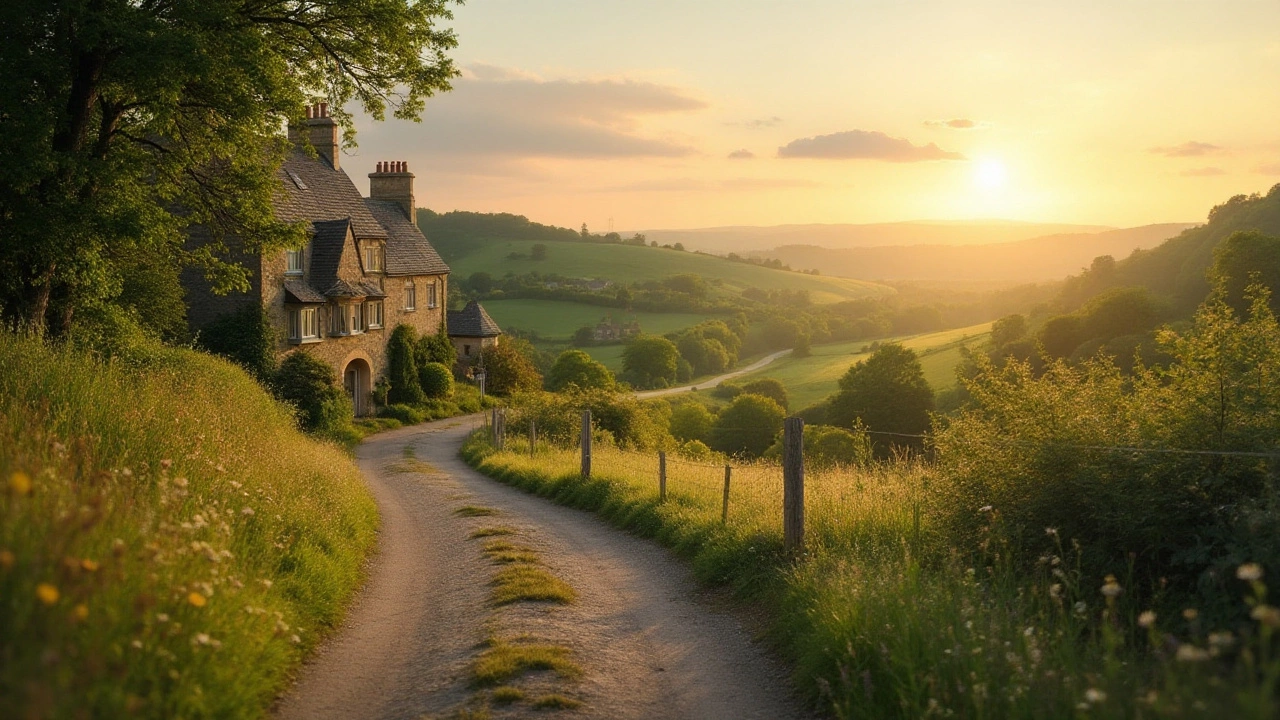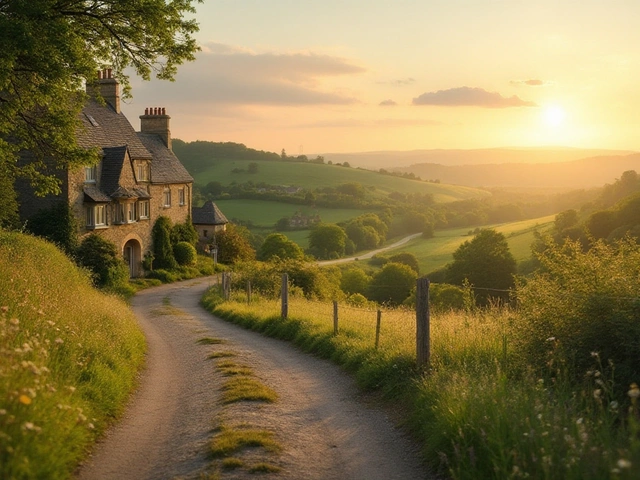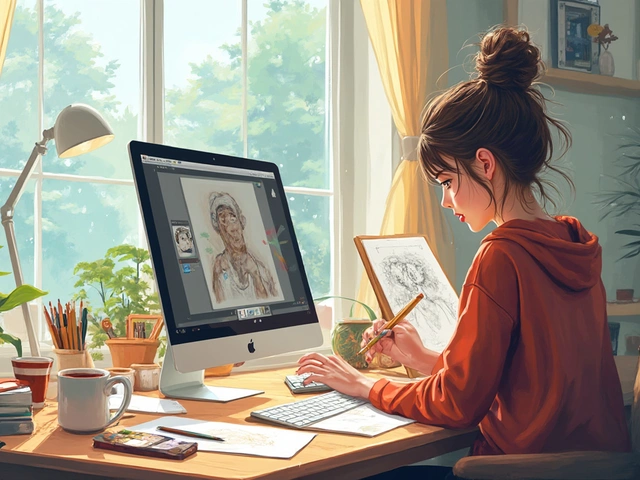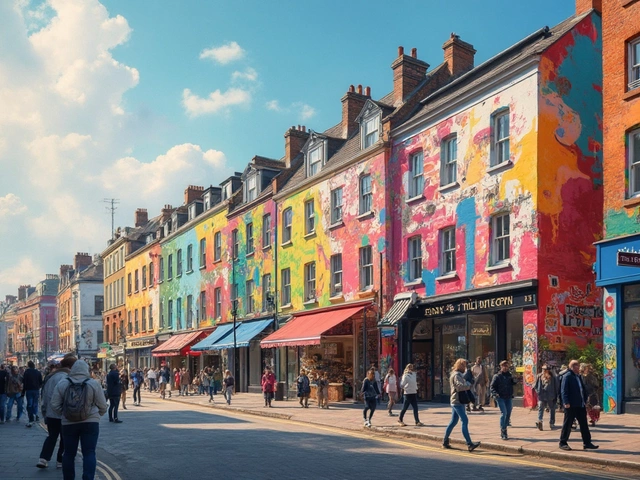Landscape painting is a timeless art form that allows artists to capture the world's breathtaking vistas in rich and expressive detail. While the natural world presents endless inspiration, distilling its beauty requires an understanding of several crucial elements that go beyond what the eye can see.
At the heart of successful landscape paintings are the essentials of composition, lighting, color, and mood. These elements work in harmony to not only replicate the scene but evoke the emotions and atmosphere tied to that particular landscape.
This article delves into each of these essentials, offering both seasoned and aspiring artists practical insights and helpful tips on how to enhance their work. Whether you're setting up an outdoor easel or working from a reference photo in the studio, these components will guide you in creating compelling and memorable landscape artworks.
- Composition and Balance
- Lighting Techniques
- Utilizing Color for Mood
- Conveying Depth
- Creating Emotion
- Practical Tips for Artists
Composition and Balance
The art of composing a landscape painting is akin to orchestrating a symphony — each element must be carefully considered and arranged to achieve harmony. Composition is, in essence, the backbone of landscape painting, determining how the viewer's eye travels across the canvas. It is about creating balance, leading the observer on a journey through the artwork. A well-composed landscape captivates and invites exploration, giving viewers the sense of being transported into the scene.
One of the fundamental principles of effective composition is the Rule of Thirds. Imagine your canvas divided into a 3x3 grid. The interaction points of these lines serve as focal areas. Placing key elements, like a towering mountain or a solitary tree, on these points or along these lines creates a more dynamic image. It guides the eye naturally and prevents the composition from feeling too centered or static.
Balance is another vital component. It doesn't necessarily mean symmetry, but rather equilibrium. Consider a scene where a large structure dominates one side; it could be balanced by including smaller elements or negative space on the opposite side. This interplay creates tension and resolves within the composition, making the painting intriguing. Think of Van Gogh's 'Starry Night.' The swirling sky is balanced by the calm of the village below, creating a continuous loop of interest for the viewer.
If I could say it in words there would be no reason to paint at all. – Edward Hopper
Patterns and repetition can also add to the composition. Repeated elements, such as a line of trees or undulating hills, draw the viewer's eye and emphasize a rhythm within the painting. This repetition can evoke order amidst the natural chaos of a landscape.
An artist must also pay attention to the horizon line's placement, as it conveys depth and perspective. A high horizon line can suggest vastness, ideal for showcasing expansive scenes like deserts or large bodies of water. Conversely, a low horizon gives emphasis to the sky, which can be used to highlight dramatic cloud formations or a stunning sunset.
It's often helpful to sketch several compositional layouts before starting a painting. Use thumbnails to explore different ideas and find the most compelling arrangement. Remember, the goal is to engage and guide, not to overwhelm or confuse. Mastering composition in landscape painting is a constant balancing act — it requires experimentation and intuition, relying on an artist's unique vision and creativity to bring harmony to the canvas.
Lighting Techniques
The dance of light across the landscape has long held painters and photographers alike in thrall, offering both challenges and delights as they work to capture the perfect scene. Light, after all, is not just illumination but an active participant in painting, influencing mood, depth, and perception. Various lighting conditions can transform the same location into entirely different pieces, each with its unique character and story. Whether you seek the golden hues of sunrise or the soft twilight of dusk, understanding how to harness light is crucial for any artist wishing to excel in landscape painting.
When pondering lighting, it is essential to consider the time of day. The direction, quality, and temperature of light shift dramatically from dawn until dusk. Early mornings offer a fresh, crisp quality; shadows are elongated, and the air is often clearer. This is why many artists cherish the golden hour—the time shortly after sunrise or before sunset—when the light is warmer and softer, lending a magical quality to the scene. In contrast, the harsh midday sun can be more unforgiving, sharpening contrasts and sometimes washing out subtle details. Recognizing these shifts allows artists to plan their work accordingly, choosing the time that best conveys the desired atmosphere.
Incorporating diverse light sources also adds richness to a landscape painting. For instance, capturing the interplay of natural and artificial lights can introduce dynamic contrasts and layers to your work. You might consider depicting the reflection of celestial bodies on water or the glow of distant city lights against a natural backdrop. In these scenarios, the balance between light and shadow becomes your artistic playground.
"Light is the language of photographers. It speaks in contrasts, dances in highlights, and whispers in shadows," remarked influential photographer Ansel Adams.This insight holds true for painters, too; using contrasts and value shifts as a language to speak to viewers with meaning and intention.
Weather and seasonal changes can also dramatically alter the quality of light in a landscape. A bright, cloudless summer day paints the world with vibrant colors, while an overcast sky can add soft, muted tones, creating a somber yet serene atmosphere. In spring, the interplay of light through new leaves can create a lattice of intriguing patterns and textures. Winter, on the other hand, may cloak the landscape in stark shadows and bright, reflective snow, offering a high-contrast visual narrative. Being mindful of these dynamic attributes encourages an artist to experiment and innovate, pushing the boundaries of traditional approaches.
Artificial lighting in paintings should not be disregarded either. Street lamps, house lights, and other sources of artificial light can create mesmerizing effects, especially when depicted in contrast with natural light. Artists have long used these elements to craft compelling narratives within their work. For example, a cityscape at dusk can capture the daily transition between night and day, highlighting this interaction through the arcing glow of warm streetlights against a cool evening sky. This technique can lend an urban landscape painting both vibrancy and depth, eliciting emotions ranging from nostalgia to excitement.
To refine one's understanding and application of light in landscape paintings, consider employing a few experimental techniques. Create studies focusing primarily on light and shadow, perhaps using monochromatic schemes to emphasize the values. Such practice hones one's ability to perceive the subtleties of light, translating them accurately onto canvas. Pay attention to atmospheric perspective by gradually softening and lightening hues as they recede into the distance, mimicking how particles in the air influence light’s travel. These exercises nurture an artist's ability to replicate the natural world holistically, channeling light's elusive dance into an exquisite visual chorus that resonates deeply with its audience.
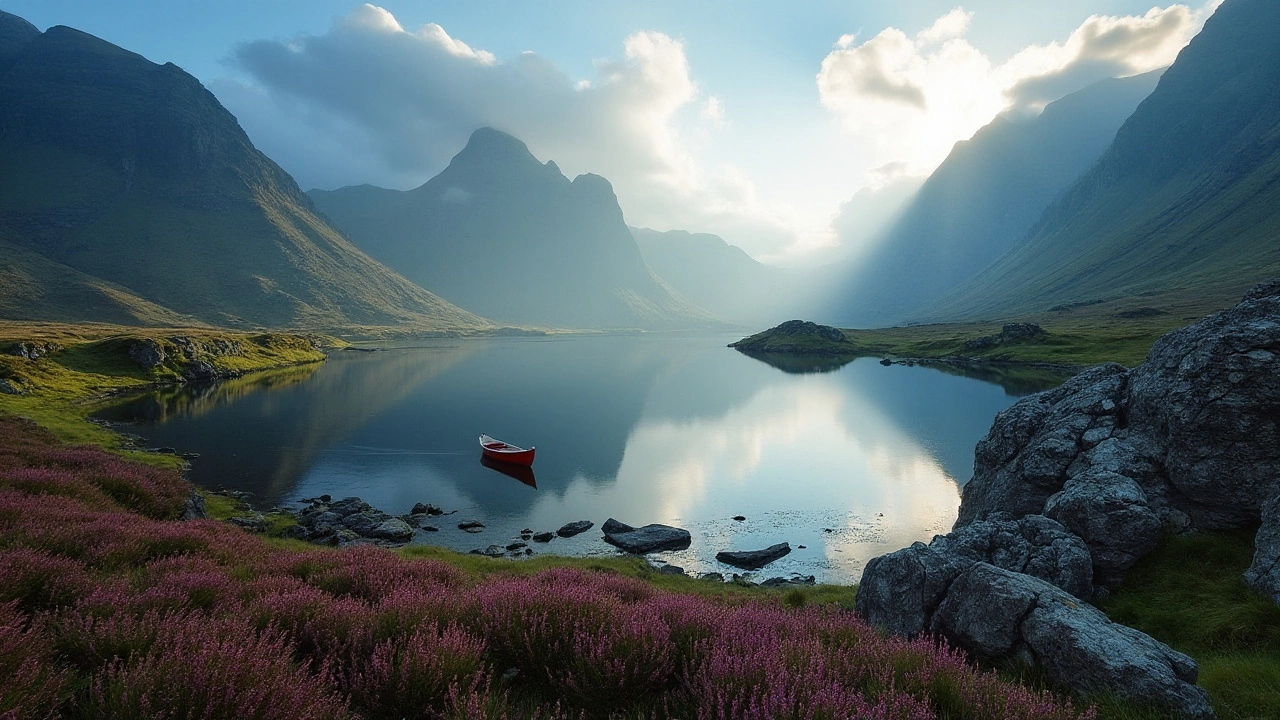
Utilizing Color for Mood
When it comes to landscape painting, few elements are as impactful as color in setting the emotional tone and mood of the artwork. Colors not only describe the natural world but also elicit feelings and memories in those who view the painting. Different hues, intensities, and combinations can transform the atmosphere from serene to dramatic, from joyous to melancholic. Experienced artists understand the power of color theory, which helps in choosing an effective palette to communicate the intended mood.
Let's consider the serenity conveyed by cool colors—blues, greens, and purples. These colors often dominate tranquil landscapes, suggesting calm seas, lush meadows, or dusk skies. Artists may deepen the hues to elicit a more dramatic or introspective mood, resembling the quietude of a forest or the vastness of a twilight scene. On the other hand, warm colors such as reds, oranges, and yellows convey energy and warmth, resembling sunrises, autumn foliage, or desert scenes. These colors invoke feelings of optimism and vitality.
Artists often employ complementary color schemes to create contrast and interest. Juxtaposing colors like blue with orange, or green with red, can heighten the visual impact and keep the viewer's eye engaged throughout the artwork. It is crucial to balance these colors thoughtfully; overuse may result in a chaotic composition, while subtlety might enhance the natural beauty in the landscape. Delving into scientific knowledge, studies show that humans can distinguish over a million distinct colors, though artists typically use just a fraction to portray their vision.
In capturing landscapes, the time of day plays a significant role in color selection. The "golden hour" shortly after sunrise or before sunset, bathes everything in a warm, golden hue. This presents a fantastic opportunity for artists to capture a softer quality of light using rich, saturated pigments, thereby enhancing the mood of the painting. In stark contrast, midday offers harsh light and cooler tones, emphasizing shadows and highlights that can be utilized for a more stark and precise representation.
As Pierre Bonnard once said, "Color does not add a pleasant quality to design – it reinforces it." Such insights align with the deliberate use of color to evoke particular emotional reactions in landscape art.
The psychological aspect of color shouldn't be underestimated, either. Certain colors are thought to evoke specific emotions, subconsciously influencing the perception of the artwork. For instance, blue is often associated with serenity and introspection, while red might invoke excitement or anger. By tapping into these associations, painters can guide the viewer's emotional journey across the canvas.
Though mastering the essentials of landscape painting involves practice and skill, utilizing the right color for mood can be an artist's greatest tool. Whether aiming to express the tranquil sadness of a rain-washed meadow or the fiery energy of a sunlit canyon, color will always be at the foreground of artistic storytelling. Engaging with color not only enriches the creative process but turns the act of painting into a deeply resonant, emotive experience, both for the artist and the viewer.
Conveying Depth
Creating a sense of depth in landscape painting is pivotal in capturing the intricate layers of nature's vistas. One of the most effective techniques to achieve this is by incorporating atmospheric perspective, which can subtly yet dramatically transform a painting. As objects recede into the distance, their colors often appear cooler and less saturated. This happens because of the light scattering through the atmosphere. By mimicking this effect on your canvas, you can convincingly convey the illusion of depth.
Another technique is the strategic use of overlapping elements. By placing objects, such as trees, hills, or buildings, in close proximity to each other, you can lead the viewer's eye from the foreground through to the background. This overlap helps define spatial relationships, providing a visual shorthand that the brain interprets as depth. Consider using clear delineations and strong contrasts in the foreground, softening these features as they progress into the background.
A compelling composition can also contribute to the sensation of depth. Employing the rule of thirds, along with diagonal lines, draws viewers' attention across the scene. Leading lines, such as a winding path or a flowing river, can create a journey for the eyes, inviting them to explore every detail from front to back. Artists often utilize these lines to guide viewers' exploration through the painted landscape, engaging them deep into the scenery.
Interestingly, the renowned artist J.M.W. Turner once said,
"Painting is a strange business. You mix paint between four walls on a flat surface, but you must create a representation of three-dimensional reality."This aptly captures the artist's challenge and the magic of rendering dimensionality on a flat canvas.
Lighting plays an understated yet crucial role in conveying depth. Varying light and shadow can emphasize form, shape, and spatial relationships within the composition. By changing light angles and intensities, you can accentuate textures and structures that guide the viewer's attention. Consider how morning or evening light can cast long shadows, adding a sense of rhythm and three-dimensionality to your work.
Including distinct foreground, middle ground, and background layers gives your work a structured depth. Assigning different levels of detail and clarity to these sections can greatly impact the experience of the piece. A high level of detail in the foreground, combined with looser brushwork and abstraction in the background, can yield a dynamic contrast that enhances depth perception. When these elements are employed thoughtfully, they vividly bring the painting to life, transforming it from a mere image to an immersive piece of art.
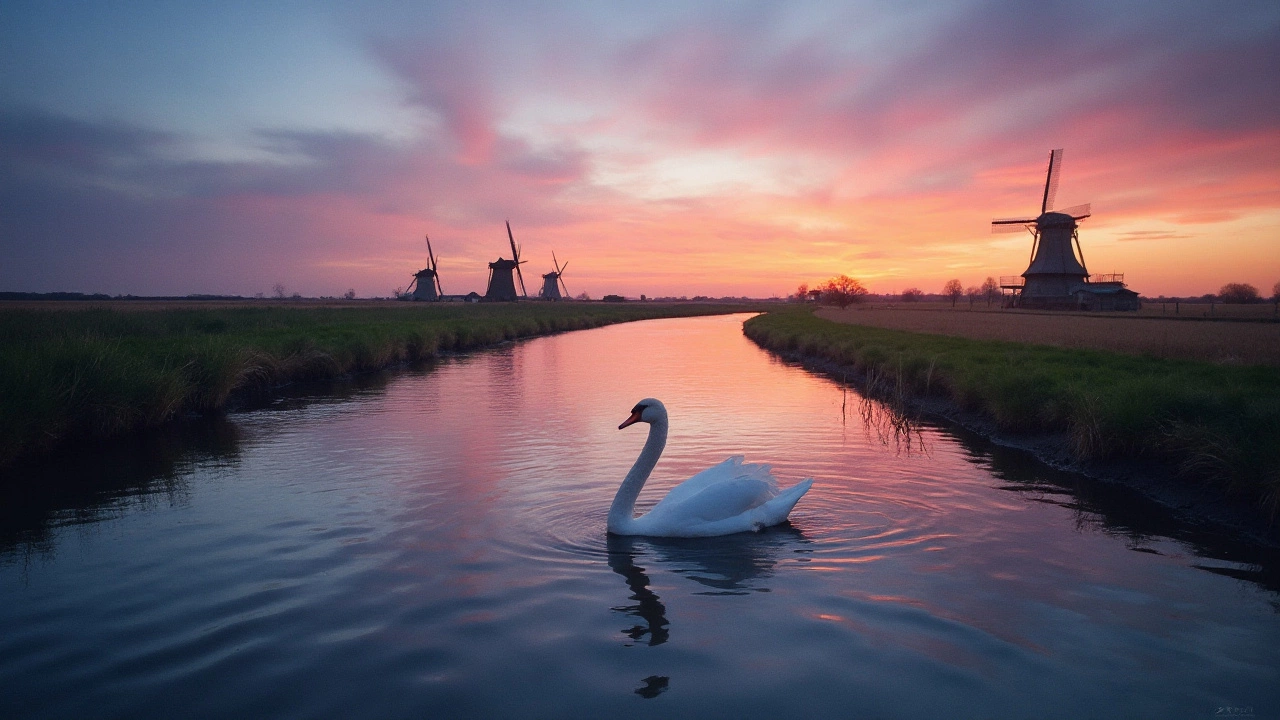
Creating Emotion
In landscape painting, the ability to evoke emotion is a hallmark of true artistry. This entails more than merely representing a view; it's about conveying a feeling, an experience, or a memory that resonates with the viewer. The elements of composition, lighting, color, and texture play a pivotal role in this emotional transference. By skillfully manipulating these elements, artists can capture and express the essence of a landscape, guiding the observer into a deeper connection with the artwork. One way to infuse emotion into a landscape painting is through the deliberate selection of striking color. The language of color is powerful and varies greatly in its impact. For instance, a cool palette comprised of muted blues and gentle greens might impart a sense of calm and tranquility, reminiscent of a serene twilight scene. Conversely, warming the canvas with rich reds and vibrant oranges can excite an audience, suggesting either the vitality of a sunlit field or the peaceful closure of a setting sun.
Luminosity and shadow also help shape the emotional tone. Consider the dynamic interplay between light and dark that can suggest mystery, hope, or solace, depending on their use. Paintings that show stark contrasts or gentle dappled light may take viewers on different emotional journeys. Sir Winston Churchill, who found solace in painting during tumultuous times, once remarked,
"I do not presume to explain how to paint, that is only by practice and revelation."His insights remind us that creating emotion in art often emerges from personal experiences and emotional responses to the subject matter.
The significance of texture should not be overlooked, as it can enhance the narrative quality of a painting. A rugged and heavily painted texture may suggest resilience or the harshness of elements, while soft, flowing brushstrokes can evoke peace and nostalgia. Also notable, the mere act of depicting familiar scenes can stir personal memories; a mountainside, a riverbed, or rolling hills may evoke childhood adventures or moments of awe and wonder, further connecting the viewer to the artwork.
An artist's approach to storytelling within a piece may provide the emotional anchor necessary for impact. Some artists choose to incorporate small human figures or animals to add narrative depth, creating a scene that feels lived-in and relatable. Others might focus solely on the landscape itself, allowing the natural elements masterfully painted to speak to the viewer's imagination. The key is not to overwhelm with detail but to suggest emotion without diminishing the vastness and grandeur intrinsic to natural landscapes.
Practical Tips for Artists
For artists yearning to capture the essence of the natural world in their landscape painting, there exists an alchemy of technique and instinct that must be honed over time. The practical side of creating artwork that resonates requires a blend of theory and spontaneity. This might sound challenging but with the right strategies, your paintings will not only visualize the scene but will also evoke the same emotions and moods you felt experiencing it in person. Understanding the fundamentals of landscape paintings, from composition to color selection, can drastically improve your work. Moreover, immersing oneself in the environment that you are attempting to portray adds layers of authenticity and depth.
It’s crucial to start with the basics of sketching your scene. Many celebrated artists emphasize the importance of composition in landscape art, the way it directs the viewer’s eye through the painting as if taking them on a journey. Practicing sketching regularly helps in understanding the perspectives and balances that define your creative narrative. Remember that a well-thought-out preparatory sketch can serve as a roadmap for your painting process. Pay attention to natural lines, like horizons and rivers, guiding the viewer deeper into the canvas.
"In nature, light creates the color. In the picture, color creates the light." – Hans Hofmann
Incorporating spontaneous brush strokes with calculated ones, balancing chiaroscuro, and using color to infuse mood requires more than technical prowess; it requires the artist’s sensitivity to nature’s subtleties. Spend time observing the effects of lighting at different times of day, as this can vastly alter your color palette. Morning light can lend a sense of tranquility with softer tones, while the dramatic shadows of late afternoon can add intensity. Capture these differences by adjusting your color choices appropriately.
- Experiment with different mediums like acrylics, oils, or watercolors to see which complements your style of expression.
- Use a viewfinder to help isolate sections of a scene, aiding in the composition process.
- Attend workshops or watch tutorials to continually refine your skills and understand different techniques.
Artists often find that stepping outside of their comfort zones promotes growth and innovation. Embrace the challenge of painting en plein air, which provides real-world experience in adapting fast-paced changes in light and weather. However, ensure to have a well-packed kit that includes essentials such as a lightweight easel, brushes, paints, and a portable palette. Mastering landscape painting involves more than just technique; it involves a harmonious relationship between the artist and nature, allowing for an intimate exploration of the environment that inspires you.
